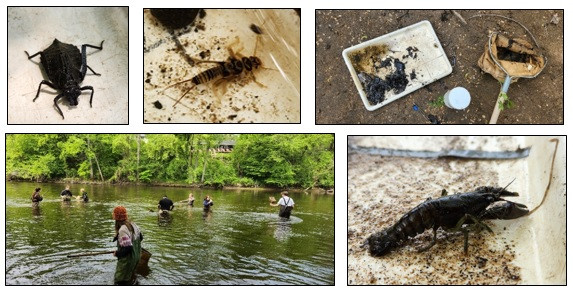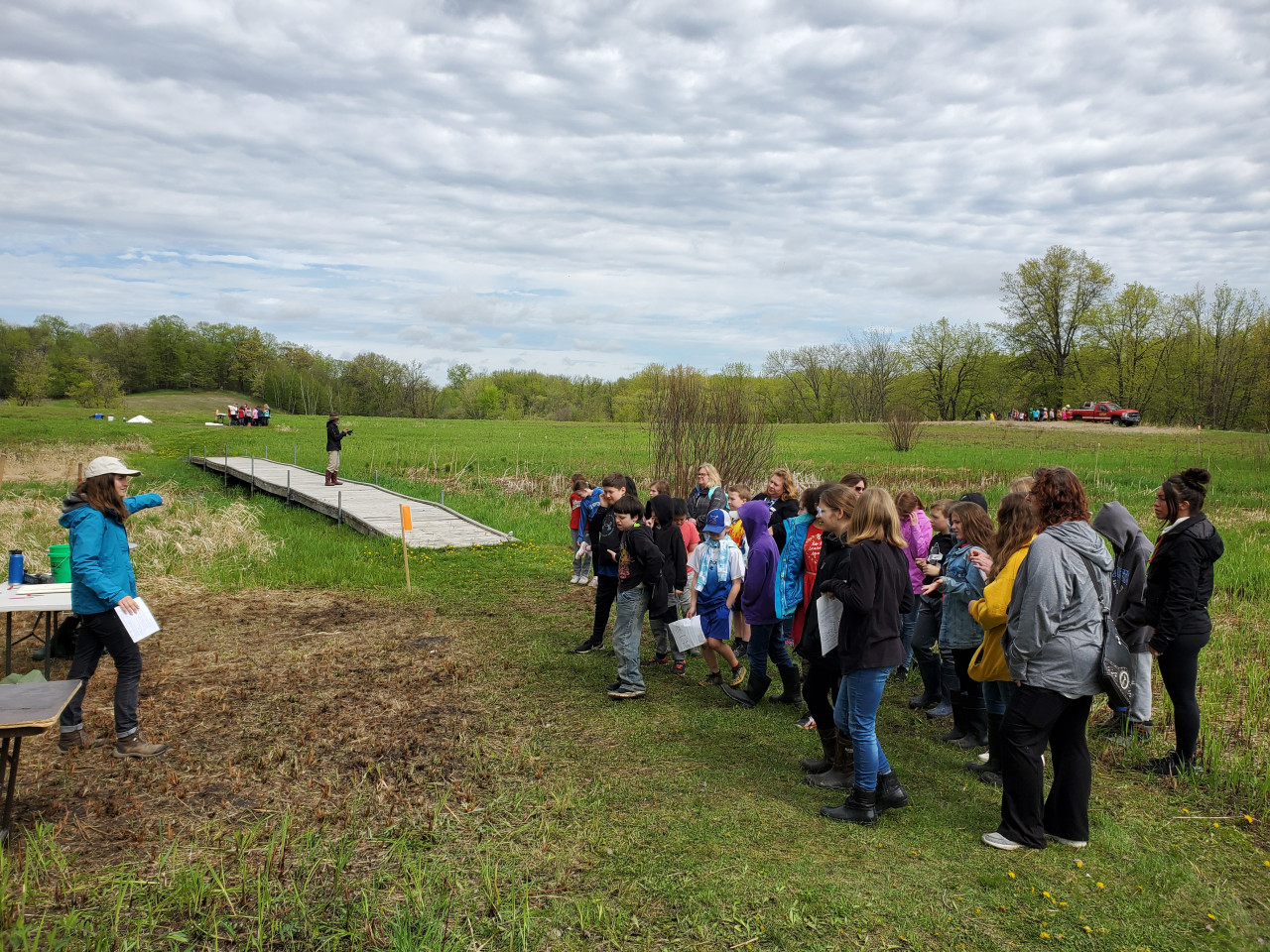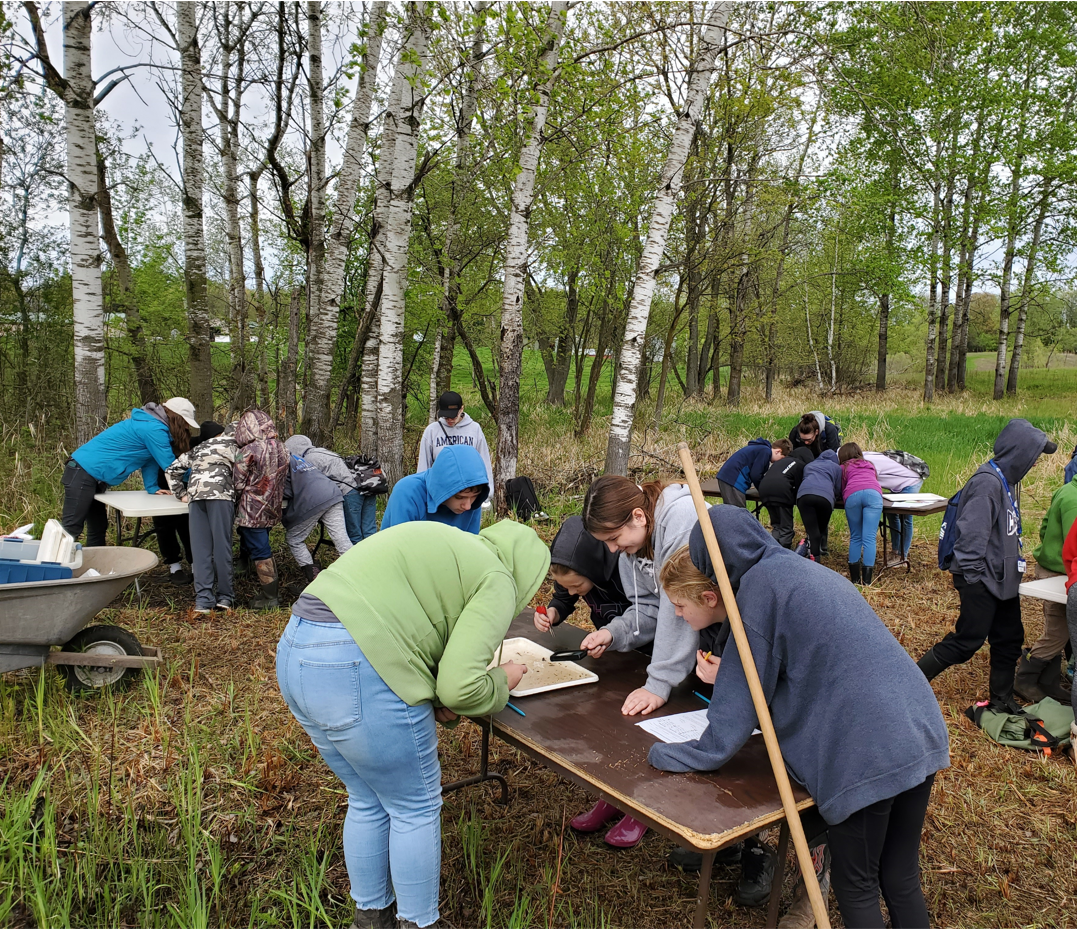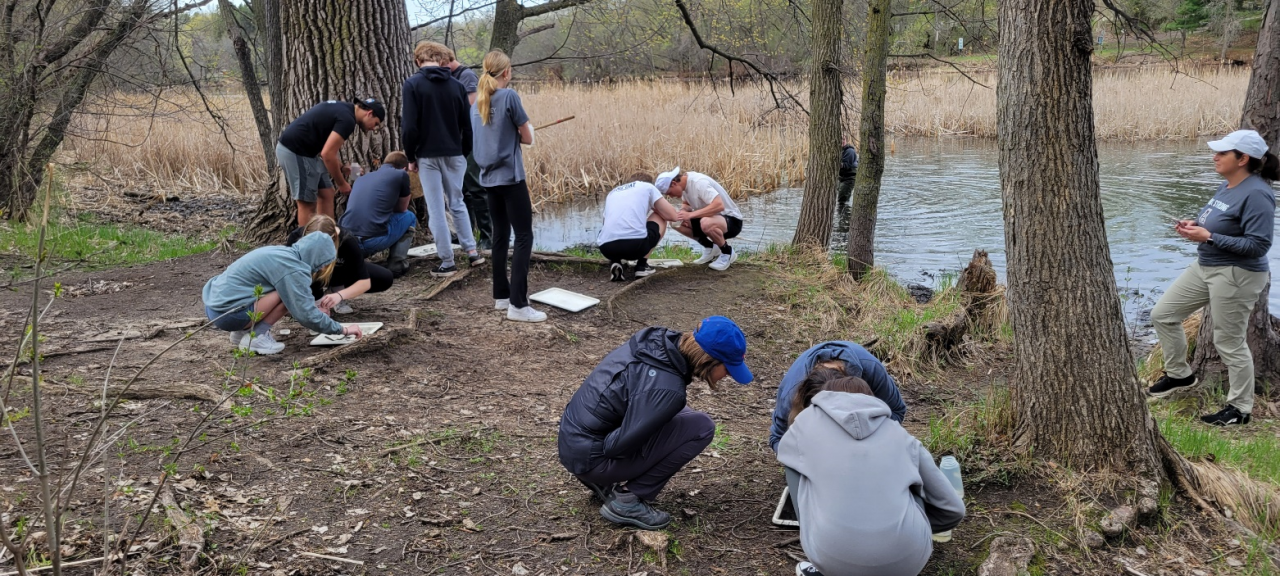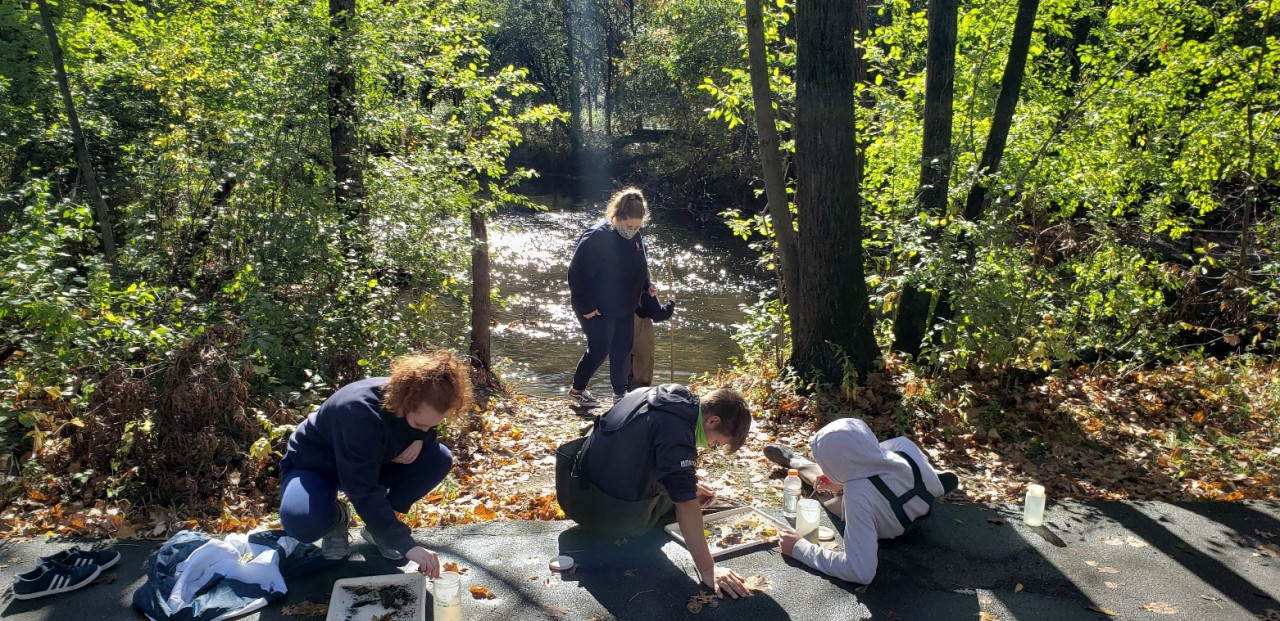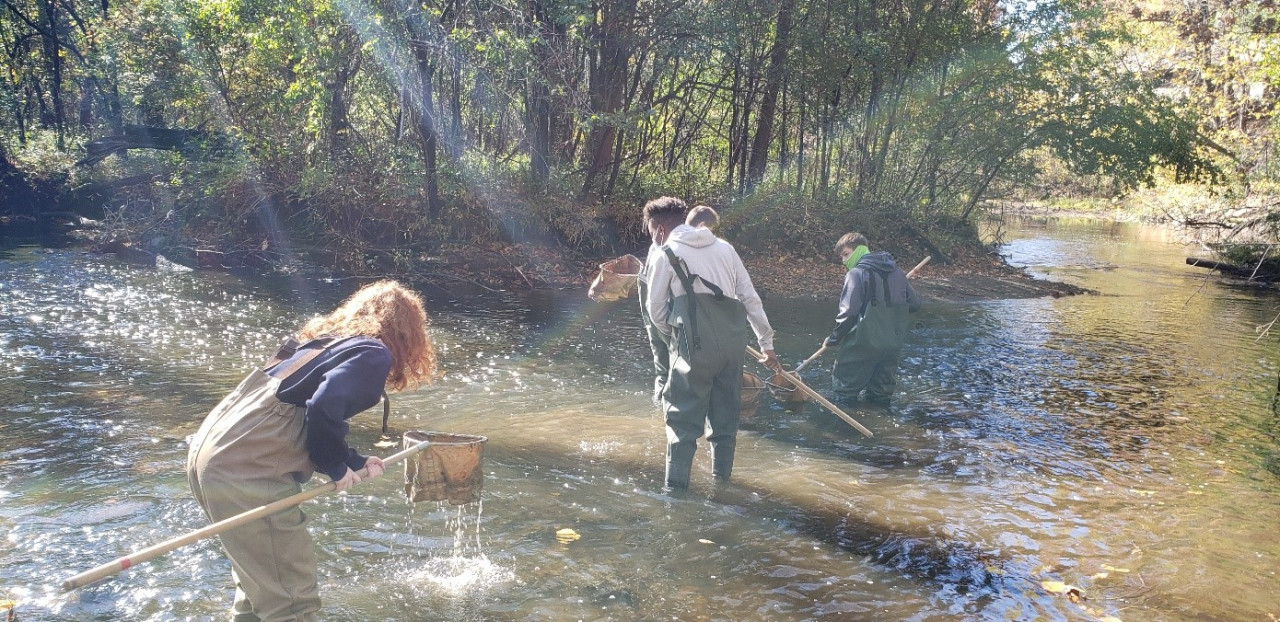Each spring and fall, ACD staff teaches area high school students about collecting macroinvertebrates to track water quality in Anoka County streams. This lesson is educational and fun for students, while providing ACD with data to track water quality over time through the streams' biota. Biological organisms that can be used to track the health of the environment they live in are called biological indicators (or bioindicators for short).
Macroinvertebrates, the larval forms of many common insects, are a great biological indicator for stream health in particular. They also live in lakes and wetlands. Many people don't realize that common insects like dragonflies, mayflies, black flies, and many others spend the majority of their lives as larval forms in the water. These larvae have varying tolerance levels to pollution, meaning some need very clean water to survive, while others can survive in either clean or polluted water. By tracking the populations of these organisms over time, we can gauge changes in water quality by assessing population shifts and known tolerance levels. This provides a valuable supplemental dataset to water quality samples collected periodically. Because these organisms spend months to years in the water, they give a more comprehensive long term look at water quality than water samples collected at random times can alone.
Anoka High School students sorting through Rum River samples for macroinvertebrates, May 2022
For the past 24 years, ACD has partnered with numerous schools and groups in Anoka County to collect macroinvertebrates. We currently partner with the Upper and Lower Rum River Watershed Management Organizations, the St. Francis American Legion, and the Rice Creek Watershed District to fund this monitoring with classes from four schools. Anoka High School and St. Francis High School classes monitor the Rum River near their schools, Totino-Grace High School classes monitor Rice Creek in Fridley, and the Forest Lake Area Learning Center monitors Clearwater Creek in Centerville. We also plan to take a new class from Blaine High School out in the fall of 2022 to monitor Coon Creek in Coon Rapids.
Over time, this program has taught thousands of Anoka County students about stream water quality, biological indicators, and work in the environmental sciences, all while getting them out of the classroom and into a stream.


